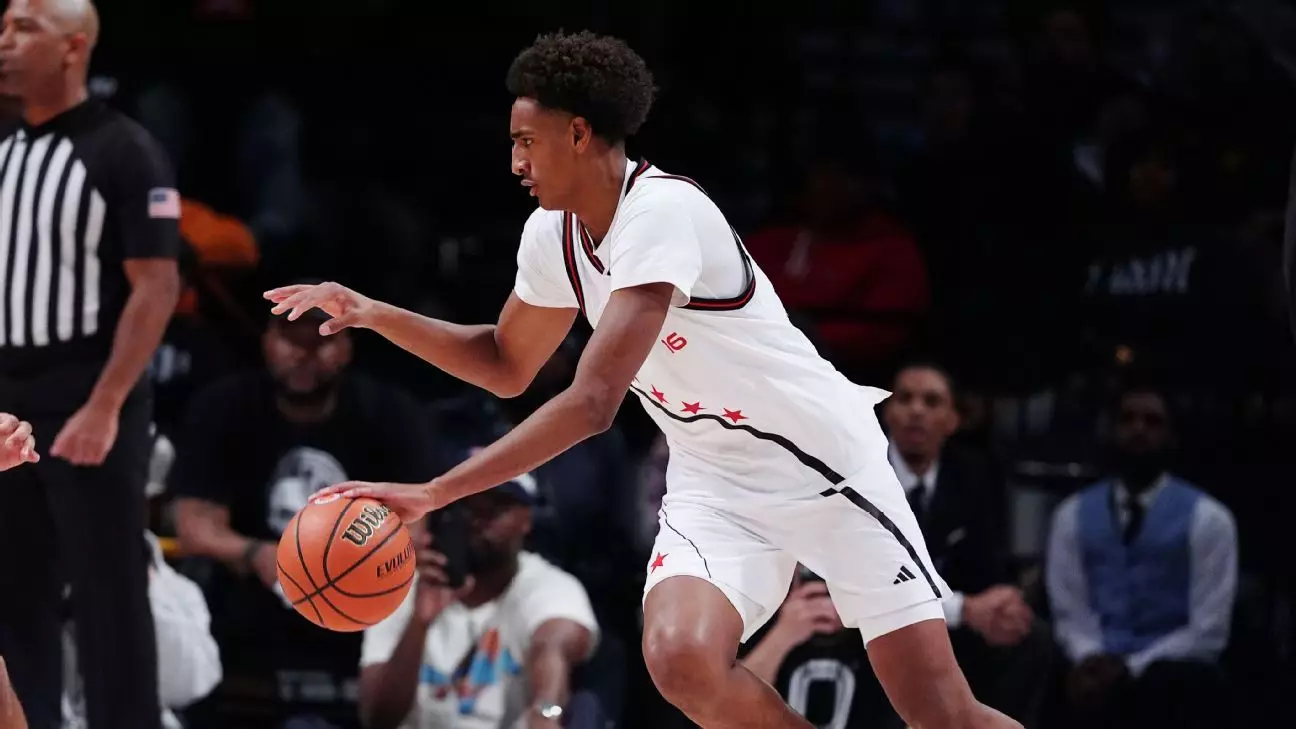In the early hours of a seemingly ordinary Thursday morning, the news hit the streets of Los Angeles like a storm: Alijah Arenas, a promising young talent and a fresh recruit for the USC Trojans, faced a harrowing accident that left him in dire straits. At just 18 years of age, Arenas was involved in a single-vehicle collision with a Tesla Cybertruck, a vehicle that encapsulates the futuristic hopes of electric vehicles but, in this moment, became a harbinger of tragedy. The crash occurred in Reseda, a neighborhood nestled within the San Fernando Valley, around 5 a.m., launching a chain of events that would enthrall and horrify the sports community at large.
The grave condition of Arenas, initially shrouded in uncertainty, escalated fears about his future. Fears that transcended the realm of sports, reminding fans and observers alike that life can swiftly pivot from the heights of aspirational dreams to the stark reality of danger. With initial reports confirming serious injuries, the image of Arenas, a prodigious talent in high school basketball, teetering at the precipice of life and death was tough to stomach. The cosmic unfairness of such an event—an emerging star almost extinguished before he had the chance to shine—challenges the narratives we tell ourselves about youthful invulnerability.
A Glimmer of Hope
Yet, in a turn of fate that feels almost cinematic, news broke that Arenas was no longer in a medically induced coma. While he remains intubated, the family received news that he had remembered the chaos that engulfed him during that fateful moment and, poignantly, he queried, “Did anyone get hurt?” This instinctive concern for others—a characteristic that transcends mere survival—speaks volumes about the young man and his character. It’s a reminder that in times of unimaginable distress, humanity often shines through the cracks of catastrophe.
The family’s statement resonates as a note of hope; they celebrated what might be considered small victories in the context of such calamity. There are signs of progress, and the strength of community is palpable. From bystanders who risked their own safety to rescue him from the burning wreckage, to prayers and wishes flowing from fans, friends, and loved ones—this accident has ignited a collective empathy that underscores the fragility of life. The narrative is no longer just about what happens in the basketball court but about survival and the raw, unfiltered essence of humanity.
The Community’s Role
In the face of adversity, the community often plays a pivotal role. The quotes from witnesses who assisted in pulling Arenas out from the inferno paint a visceral picture. The act of banging on the car window against the backdrop of draping smoke and fire underscores a common theme in tragedies: people often rise to the occasion, displaying remarkable bravery. This incident has become a shared story, weaving itself into the fabric of the local sports narrative and ultimately serving to elevate Arenas to a symbol of resilience.
However, the aftermath of such events also prompts a critical reflection on issues surrounding road safety, vehicle technology, and the societal responsibility we bear in ensuring the safety of our youth. Arenas’s situation sheds light on the broader conversation about how we prepare and protect those destined for greatness. What measures need to be in place to ensure the safety of rising stars? Are we doing enough to safeguard their futures?
A Wrestle with Fate
Alijah Arenas’s journey from the brink of disaster to potential recovery should provoke introspection not just about the fleeting nature of life, but also about the structures supporting our future generations. While the world watches his recovery with bated breath, it is essential that we channel our hopes and fears into advocating for safer environments—both in terms of driving and in nurturing young talent.
The complexities of life are never more evident than in such juxtaposed moments of glory and disaster. A high school basketball star flirting with the possibility of professional greatness now faces an uphill battle—not merely against physical setbacks but against the echoes of insecurity that such traumatic events tend to instill. As the days unfold and updates emerge from his family and medical team, one cannot escape the feeling that Arenas’s fight is a collective one—a struggle mirroring that of countless others in every community grappling with the notion of human fragility.

Leave a Reply